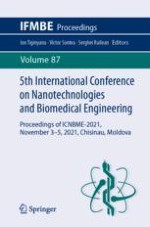2022 | OriginalPaper | Buchkapitel
Microbiological Decontamination of Air and Surfaces Due to Nanosecond Discharges
verfasst von : Iurie Bosneaga, M. Bologa, E. Agarwal
Erschienen in: 5th International Conference on Nanotechnologies and Biomedical Engineering
Aktivieren Sie unsere intelligente Suche, um passende Fachinhalte oder Patente zu finden.
Wählen Sie Textabschnitte aus um mit Künstlicher Intelligenz passenden Patente zu finden. powered by
Markieren Sie Textabschnitte, um KI-gestützt weitere passende Inhalte zu finden. powered by
